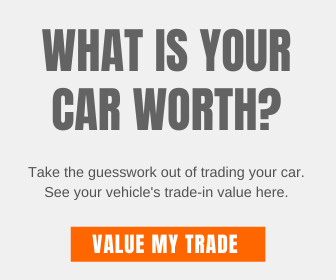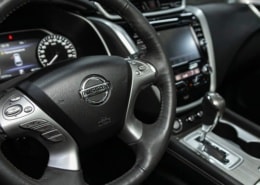How to Select an Extended Auto Warranty
One of the most common mistakes people make when buying an extended warranty is purchasing the wrong type of coverage for their vehicle.
The second most common mistake is overbuying auto warranty coverage they will never use or need.
Common Mistakes When Selecting an Auto Warranty
The most common mistake car buyers make when buying an extended warranty is purchasing the wrong type of coverage for their new or used car.
Some consumer advocates say you should avoid purchasing an extended warranty at all costs. I believe purchasing an extended warranty (extended service contract) is a significant investment and will protect you in the case of any unforeseen high repair costs.
Auto warranties are not created equal. No matter which one you choose, never take a salesperson’s word for what is covered under the policy, and always read the fine print on the warranty paperwork.
One of the consumers’ biggest mistakes when selecting an extended warranty is not choosing the right coverage for their driving needs.
People usually find out they purchased the wrong type of coverage months or years later when the warranty doesn’t cover a needed repair.
All they remember is they spent a lot of money on a policy that doesn’t cover anything on their vehicle.
These people will file complaints, turn to social media, and bash the warranty company immediately. The truth is they made an impulse buy and didn’t research the policy before buying it.
Over the years, situations like this and fly-by-night companies have given the warranty industry a black eye.
Why Consumers Buy the Wrong Auto Warranty
There are many reasons someone may purchase the wrong type of coverage for their vehicle.
Below are some of the most common:
- They didn’t do the research or do online comparison shopping before making a snap decision at the time of purchasing a vehicle.
- They purchased named component coverage instead of an exclusionary coverage warranty.
- They bought the warranty because it was the lowest price. Cheapest doesn’t necessarily mean the best coverage for you.
- They decided to buy an auto warranty based on what the brochure stated and never read the contract. A warranty brochure is not a contract.
- They did not read the warranty contract personally to find out what was covered and, more importantly, what was not covered.
- They did not buy the extended warranty from a reputable company, and now the company is out of business.
- They took the salesperson’s word the warranty they purchased was bumper-to-bumper coverage when it was not.
Some consumer advocates say you should avoid purchasing an extended warranty at all costs. These guys probably haven’t had to shell out $3,500 for a new engine or transmission.
In my opinion, purchasing an extended warranty (extended service contract) is a significant investment and will protect you in the case of any unforeseen high repair costs.
Never let a car dealer tell you that you must buy an extended warranty before you will be approved for a car loan.
Some unethical finance managers may tell you they can get you a better interest rate or not be able to get you approved at all unless you purchase an extended warranty or other back-end products.
This is false and is known in the industry as a forced extended warranty scam.
Did you know?
- You do not have to buy an extended warranty from the dealership when you buy your vehicle. Although a dealer will tell you otherwise, you may purchase coverage for your car from any company you choose.
- Comparison shop extended warranties to find the best price and right coverage to meet your driving needs.
- Use free quotes to level the playing field in negotiating warranty coverage with a dealership.
What to Look for When Selecting an Auto Warranty
When researching and comparing coverage, keep the items below in mind.
- 100% money-back guarantee on your extended warranty purchase – If you’re unhappy with your extended warranty purchase for any reason and have not filed any claims. You can return your purchase for a full 100% refund within 30 to 60 days.
- A brochure or a pamphlet is NOT an auto warranty contract – Do not base your buying decision of an extended warranty plan on the information provided in the company’s brochure or leaflet. You should always read the actual auto warranty contract to review the plan’s terms and conditions before making buying decisions. Find the section for what is covered or, better yet, what’s not covered by the warranty.
- What’s the deductible – Some companies will let you choose the deductible amount you would like to pay—the more the deductible, the less overall cost for the warranty. By paying a small charge at the time of purchase, you can avoid the hassle of a deductible altogether by paying a little more and selecting coverage with a $0 deductible.
- Deductible per repair visit vs. repaired item – You have to be careful with some auto warranty companies; they will charge you a deductible for every “repair item” instead of every “repair visit.” A repair visit means you only pay the deductible once, and you can have as many covered repair items fixed during your stay. A pair item deductible means if you have a $100 deductible and have three covered repair items fixed. You will have to pay $300 to get your car out of service.
- Real bumper-to-bumper coverage extended auto warranty – If an extended warranty list the items covered by the policy, it is a “named component” or “inclusionary” and is not an actual bumper-to-bumper plan.A true bumper-to-bumper plan is exclusionary; it will only list a few components not covered by the program. These types of components are usually maintenance items, wear and tear items, and cosmetic items.
- Mechanical breakdown and wear & tear coverage – Many extended warranties will only cover repairs caused by mechanical breakdowns. Auto warranties with wear and tear protection mean you will be covered for parts that break down due to wear and tear. Any covered parts in an auto warranty should have a “Wear and Tear Provision.”
Also, be aware of extended warranty companies who add “Wear and Tear Exclusions” within their plans. The e exclusions can be for such items as piston rings, struts, valves, or other expensive mechanical components that will wear out over time and not be covered by the warranty.
Proceed with caution when dealing with these types of extended warranty plans. Make sure you understand precisely what the policy covers.
- Over-heating and specialty items such as ABS brakes – Over-heating can be a common factor of major mechanical problems when a vehicle breaks down. Make sure the auto warranty does not exclude damage caused by over-heating for any reason.Early ABS braking systems are costly items to repair and replace. Avo d extended warranty plans with special clauses that exclude these types and other coverages.
- Vehicle repairs can be completed at any ASE-certified repair facility – ASE is the abbreviation for “Automotive Service Excellence.” Some auto warranties will only pay for repairs if you take the vehicle to the repair shops they recommend, like the dealership you purchased the car from. This isn’t so bad unless the dealer goes bankrupt or out of business. Look for an auto warranty plan that allows you to choose where you get your vehicle repaired as long as it’s an ASE-certified repair facility.
- Don’t overpay for coverage; buy extended warranties from the source – Most online automotive extended warranties are cheaper and more affordable than what car dealers charge. Also, the extended warranties these online companies offer are more comprehensive and provide more benefits than what a dealer has to offer.
- Warranty companies that will pay the repair facility directly – Find out if the warranty company pays the repair facility directly. Some auto warranty companies will make you pay for your repairs first and then have you file a claim with them. They will then drag their feet or make excuses, trying to get out of refunding you the money you’ve already paid for the repairs.
-
Coverage that takes effect the day you purchase it – Most extended warranties, mainly the plans car dealers sell, start when you buy the vehicle or at mile zero.
This means if you buy a five-year – 50,000-mile extended warranty when you purchase your new car and a factory warranty of 3 – 36,000 miles, your extended warranty only covers you for two more years or 14,000 miles. Look for an auto warranty that starts the day you buy it and the current mileage on the vehicle. - Is the warranty transferable – Some extended warranty companies will cancel your coverage as soon as you sell or trade the vehicle. By choosing transferable coverage from one owner to another, you’ll be able to increase the value of your car to prospective buyers when you decide to sell it.
- The auto warranty administrator is well funded and insured – A Warranty Administrator is a company responsible for paying any of your claims; this is not always the company you purchased your warranty from. You will want to look for administrators who deposit some of your warranty’s purchase price into a “Claims Reserve Account” type to make sure there are funds to pay any future covered claims.
- Reinsurers should have excellent ratings and be financially stable – Reinsurance is insurance purchased by the extended warranty company. If the company goes under because of excessive claims, the reinsurance company will step in to provide relief.
-
You don’t have to buy an extended auto warranty when you buy a vehicle – Don’t let a car dealer tell you that you have to buy an extended warranty when you purchase a car. Most companies will allow you to purchase at any time. Remember that the longer you wait, the older your vehicle gets and the more miles you will put on your car.
The older your car gets, the more miles it has will increase the price you’ll pay for coverage. If you want to purchase an extended warranty, it’s better in your pocket to buy one sooner than later.
Benefits Good Extended Warranty Coverage Will Include
Some other added benefits you should look for that some auto extended warranty companies provide to their customers. These benefits can be convenient if you’re unfortunate enough to have a significant mechanical breakdown at the most inconvenient time.
Nationwide roadside assistance coverage – Look to see if the auto warranty plan offers national roadside assistance coverage for free. You also want to check to ensure the program covers “per occurrence” and not an out-of-pocket reimbursement plan that only repays you for covered repairs.
Review the roadside assistance plan; some plans cover emergency tire service, lockout service, fuel delivery, battery service, and more.
Car rental coverage – If your vehicle must remain in a repair facility overnight, you will want to take advantage of car rental coverage. Look for this type of coverage while researching auto warranty plans.
Keep in mind there may be limitations on how much money you will be reimbursed per day and how long you can keep a rental vehicle. The good thing is, if you have rental reimbursement coverage, you’ll have a car to drive while yours is in the shop being repaired.
Nationwide repair facility coverage – Look to ensure you can take your vehicle to any ASE-certified repair facility in the U.S. or Canada. The last thing you want to happen is your vehicle breaks down, and you are 1,000 miles from home.
Contract renewals or continuations – Look for provisions that the warranty company may offer so you can renew or continue your auto warranty contract for one-year terms as long as you still own the vehicle.
Trip interruption coverage – Look for included trip interruption coverage. If your vehicle breaks down more than a specific mileage from your home and the repair is covered, you’ll be reimbursed for your meals and lodging. Check your contract for daily food and lodging amount restrictions that may be required.
Toll-free phone number available 24 hours a day, 365 days a year service – Unfortunately, when your vehicle decides to break down, it will most likely not be during regular business hours.
The company should be easily accessible with a toll-free number and provide service 24 hours a day, 365 days a year.
Emergency towing coverage and reimbursement – Look for towing coverage and reimbursement. Some extended warranty companies tend to leave out this item. Tow fees can be surprisingly high if you find yourself broken down in the middle of nowhere.
Standard Exclusions Found in Auto Warranty Coverage
There are specific exclusions that you will find in most extended auto warranties. These exclusions are standard; you will find them in most, if not all, warranty plans.
| Extended Auto Warranty Standard Exclusions | |||
|---|---|---|---|
| Exclusions | Exclusions | Exclusions | Exclusions |
| Air Bags | Paint | Upholstery | Carpet |
| Batteries | Glass | Weather Strip | Zippers |
| Brake Pads | Light Bulbs | Exhaust Systems | Chrome |
| Brake Drums | Sealed Beams | Dash Pads | Headlamps |
| Brake Rotors | Moldings | Windshield Wipers | Shock Absorbers |
Before buying a warranty from any company, always review the actual warranty contract (not the brochure or pamphlet). Keep your eyes on any sneaky exclusions and clauses that may keep the warranty from paying on a future claim.









